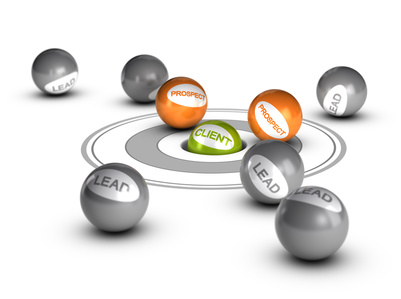 The relationship between buyers and sellers has transformed because of technology. Buyers now hold all the cards. If they need pricing information or product specifications, they can go to your website. If they want to learn about your customer service, they can learn what people think though social media. As we've pointed out frequently on this blog, the average buyer completes 57% of their buying process before ever contacting a salesperson. When they do connect with a salesperson, they're looking for help, not to be sold. Which brings us to the point: in the modern buying process, what works best social selling or outbound selling?
The relationship between buyers and sellers has transformed because of technology. Buyers now hold all the cards. If they need pricing information or product specifications, they can go to your website. If they want to learn about your customer service, they can learn what people think though social media. As we've pointed out frequently on this blog, the average buyer completes 57% of their buying process before ever contacting a salesperson. When they do connect with a salesperson, they're looking for help, not to be sold. Which brings us to the point: in the modern buying process, what works best social selling or outbound selling?
Outbound selling requires activity (and lots of it!)
Many advocates of outbound selling feel that activity will eventually produce results. If it takes 100 calls to get an appointment and you need 3 appointments per week, you need to make 300 calls per week. Most decision-makers today are difficult to get on the phone. They have tons to do and precious little time to do it. In the interest of efficiency, executives have to screen phone calls. Unless your someone who has something they need right now, your chances of connecting with them are slight.
You also run the risk of coming off as a stalker (or a robocaller.) Let me give you an example - I can count on getting a phone call every single day from 360-322-6713. 360-322-6713, I'm calling you out. Stop callilng me! You're really frightening me. This number is a robocaller that doesn't give you an option to opt out of their spam calls.
Between executive's workloads and distinguishing yourself from robocallers, it's extremely difficult to develop meaningful sales opportunities with telemarketing. You can increase your odds by referencing someone who's recommended you, but it's still a battle to get your prospect on the line. And if you do, are you really being helpful?
Social selling requires activity too, but you're helping rather than selling
Social selling requires a different kind of activity than outbound selling. The heart of social selling is to find people with problems that you can help them solve and giving them the information they need on their terms. A prerequisite to social selling is having a library of content to help them at different stages of their buying process.
This content will typically take the form of blog articles, eBooks, webinars, whitepapers and videos that potential buyers can access on their terms. For most B2B companies, this content serves as a sample of your expertise and creates trust in a potential buyer. This is not sales content! This is content that answers questions typical buyers have and shows them options to solve their business problems. The dirty not-so-secret of content marketing is that it requires a steady flow of quality content.
There are many ways to attract potential buyers to your marketing content:
- Organic search - organic (non-paid) search results drives people who are asking the questions you're answering to your website and marketing process. This is true inbound marketing - these people are finding you! In order to get good organic search results, a steady flow of blog articles is a must.
- Social media posting - posting your content on your company social media channels is another way to deploy your marketing content. One of the advantages of this approach is that good content is often shared and amplified by your audience.
- Social selling and prospecting - for most B2B companies, the best network for social selling is LinkedIn. Good social salespeople find LinkedIn groups where their potential buyers are active. They participate in the groups and help, not sell. They share their marketing content to answer questions and give people ideas on how they can solve the problems they face.
Social selling is effective because it matches up with the way decision-makers buy.
A hybrid approach - social prospecting
The reality is that most of us use both tactics in our lead generation efforts. A hybrid approach is social prospecting - targeting prospects that meet your ideal customer profile and making a warm approach via social media. For example, a concise LinkedIn InMail that briefly describes how you help companies like your prospect's with an invitation to learn more is the modern-day equivalent of the 1980s cold call.
Unlike the cold call, the LinkedIn outreach allows your prospect to read your message and learn about you through your LinkedIn profile. Needless to say, it's important to have a professional LInkedIn profile that communicates your value to the prospect.
Another hybrid approach is networking - attending events where your prospects network and developing relationships that may create sales opportunities down the road. In my opinion, 2 hours spent at a good networking event is worth 10 hours spent cold-calling.
Summary
In my opinion, social selling is more effective than outbound selling in today's business environment. Quite simply, social selling meets potential buyers on their terms. Every company should evaluate it's various lead generation channels and pick the mix that works best for them. If you use marketing analytics, the answers should be obvious. If you don't have social selling in your mix, you should seriously consider adding it.









